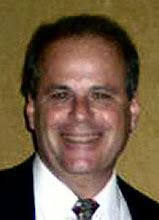 For more than sixty years Yiddish acting great Maurice Schwartz has directed and performed in more than one hundred plays both domestically and abroad. His dedication to performing plays of the highest quality exemplifies the artistry that occurred within the Yiddish Theatre in the nineteenth and first half of the twentieth century. The Yiddish Theatre, in all its glory, was at its zenith on the Lower East Side of New York City, especially in the area on or about Second Avenue.
For more than sixty years Yiddish acting great Maurice Schwartz has directed and performed in more than one hundred plays both domestically and abroad. His dedication to performing plays of the highest quality exemplifies the artistry that occurred within the Yiddish Theatre in the nineteenth and first half of the twentieth century. The Yiddish Theatre, in all its glory, was at its zenith on the Lower East Side of New York City, especially in the area on or about Second Avenue.The photograph included here is of Schwartz (left) and novelist I. J. Singer, author of the novel from which Schwartz created the play "Yoshe Kalb."
For those of you whose interest lies in Yiddish theatre, you will enjoy perusing the more than twenty pages found within this exhibition. You can not only read about Maurice Schwartz the man (a link to an unpublished biography of Schwartz can be found within this exhibition), but also the actor. You can also see photographs of many of his productions and learn a bit about many of the Yiddish Art Theatre productions themselves, i.e. not only the plays his troupe performed, but also those who worked behind the scenes as well and the playwrights themselves. You will also learn a bit about Schwartz's acting troupe itself and the myriad of talented actors and actresses that once graced the Yiddish stage.
For those of you who do research about the Yiddish theatre, you will find not only a listing of most all his YAT productions, but also a page that lists in greater detil more than one hundred of his productions. This is especially interesting because of information these listings contain, e.g. full cast listing of the majority of those productions listed. You will typically find the title of the production, the playwright's name, the location and name of the theatre in which the YAT performed this production at, and the month and year the production opened. I am still missing information on many of these listings as well as complete information on other YAT productions, so if anyone has information that isn't available on this webpage, please contact me.
Though some of the material found within this exhibition has previously been presented by this online Museum, there is much new to be seen. To see this exhibition, please click here. The aforementioned page listing the more than one hundred YAT productions with casts of characters can be found at here. You can also find a listing with links to most of the Yiddish Theatre material at the Museum of Family History's Yiddish World here.
Lastly, for those of you who wish to hear and read in Yiddish (and English) some poetry written by Itzik Manger and Peretz Miransky, please visit the Museum's Yiddish Vinkl Poetry Corner here.









